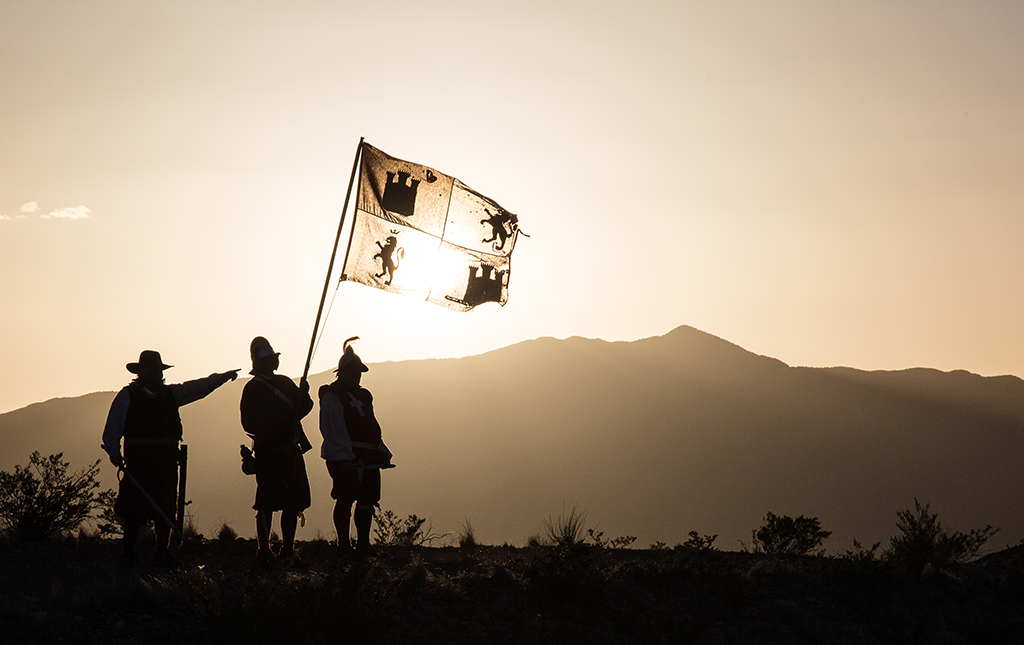Between the Coronado entrada and the 1598 colonization mission led by Juan de Oñate, many residents of New Spain continued to hope for new economic and missionary opportunities in the north. Coronado’s reports alerted them to the existence of thousands of people who, from their perspective, were potential laborers. Franciscans and secular settlers alike appreciated the Pueblos’ sedentary lifeways. By the mid-1500s, Spanish settlers had learned the hard way that it was virtually impossible for them to subdue nomadic peoples. From the Pueblos’ perspective, however, the Coronado expedition created enduring fear. The excessive violence and brutality that characterized the first meeting of Spanish soldiers and Pueblo peoples at Hawikuh and Tiguex left an indelible mark in their collective memories. Even though the people of Cicuye avoided open warfare with the Spaniards, they learned from Coronado’s methods that the Europeans were willing to use the threat of violence to manipulate their people.
Camino Real
Camino Real
Despite Coronado’s failure to establish a permanent Spanish presence in New Mexico, Juan de Oñate’s later colonizing expedition extended the Camino Real northward to the Rio Grande Valley.
Spanish officials in Mexico City and Madrid, as well as Catholic leaders, wished to put an end to the continued brutality of conquest. The 1542 New Laws were regularly ignored or enforced with great leniency. By 1550 the line of settlement had been pushed northward to the mining center of Zacatecas. Within a short time, Zacatecas became the second most populous city in New Spain due to a silver-mining bonanza. In 1565 a permanent colony was established in Florida.
Expansion turned royal attention once again to the problem of violence. In another attempt to redefine Spanish colonization through legislation, King Felipe II issued the Comprehensive Orders for the New Discoveries in 1573. This body of legislation gave Catholic missionaries the primary role in the colonization process. The regulations expressly prohibited the use of the word “conquest” in favor of the more diplomatic term “pacification.” Royal officials forbade unsanctioned colonization expeditions in hopes of preventing unwanted brutality against native peoples. In officially authorized missions, Catholic friars were to rein in conquistadores’ excesses.
As in the case of the earlier legislation, the 1573 colonization laws were unenforceable. The patterns of conquest that dated back to the Iberian reconquest and the early explorations of the Americas, including the use of the requerimiento, native allies, and display violence, persisted well into the seventeenth century. Beyond the borders of the former Aztec Empire, even in cases where settlement had already taken place, violence often abounded. Such was the situation in Zacatecas between the 1550s and 1590s. Shipments of silver made their way down the newly established Camino Real de Tierra Adentro (Royal Road of Interior Lands) to Mexico City, and then on to the port at Veracruz where they were transported to Spain. Along the way, nomadic peoples referred to as Chichimecas by the Spaniards attacked the convoys. Chichimeca was a Nahuatl term that meant “lineage of the dog.” Although the Mexica themselves considered nomadic peoples to the north to be the kin of their own ancestors, Spaniards disparaged them. The Chichimeca Wars that raged in the region between Mexico City and Zacatecas between the 1550s and 1590s created greater loss of life than any other conflict in Mexican history, including the initial conquest as well as the Mexican Revolution of the early twentieth century.
What is the significance of the Camino Real?
Over time, the violence abated–but never vanished–as missionaries and other Spaniards alike learned to normalize relations with indigenous peoples through the practice of gift giving, subsidized by the Spanish Crown. Missions sprung up around mining centers to instruct native peoples in the ways of Christianity and Spanish civilization. Zacatecas became a springboard to further northern exploration, and it also boasted a different type of society based on wage labor because the systems of encomienda and repartimiento proved ineffective for bringing laborers to the mines. Within the context of the northern mining frontier, young men proved their valor through their abilities to wage war against nomadic peoples. It was from this group of men that the leadership of the first permanent settlement in New Mexico would come.
